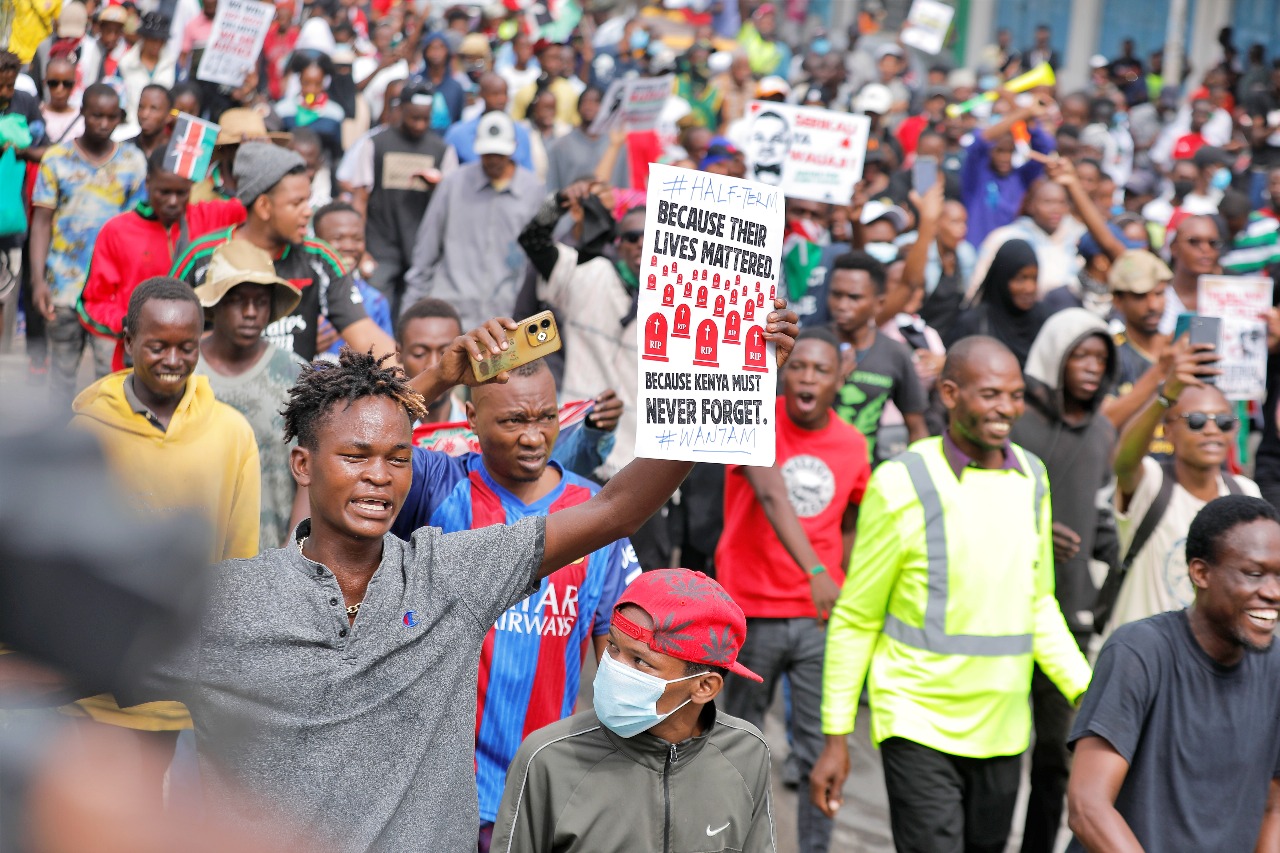

Major streets across the city witnessed a heavy police presence, drawn from the Anti-Riot Unit, General Service Unit, Kenya Forest Service, Kenya Prisons Service, Administration Police and Kenya Wildlife Service,
Access roads to key government installations, including the Mombasa county commissioner’s office and State House Mombasa, were barricaded to the public.
It later emerged that organisers of the protest, including youth groups and rights activists, had spent two days in dialogue with regional police bosses to secure permission for the demonstration.
Veteran human rights defender Khelef Khalifa confirmed the talk, saying, “We had discussions with them for two days. Finally, we convinced them. They wanted to choose the protest route, and we assured them it would be peaceful as long as there was no interference.”
He said young people have millions of reasons to express their frustrations and should be allowed to protest peacefully.
“Last year, many were killed. Police used live bullets, and today, we were asking why,” Khalifa added.
"I hope Mombasa sets an example for the rest of the country that police can let demonstrators do their thing. Not a single stone was thrown. It was peaceful."
The day began with a solemn three-hour mass at ACK Cathedral on Nkrumah Road, from 6am to 9am.
Afterward, the protestors marched to Mapembeni along Moi Avenue, where the demonstrations officially began.
A large contingent of police officers was deployed in the town centre to maintain order and prevent any incidents of looting or violence. Anti-riot officers, on foot and in trucks, flanked the protesters along their route.
The march covered Moi Avenue, Digo Road, Jomo Kenyatta Avenue, Ronald Ngala Road and Abdel Nasser Road before circling back to the town centre.
Tensions rose as the demonstrators attempted to proceed along Nkrumah Road toward the Mombasa county commissioner’s office and State House.
Dozens of heavily armed police officers had formed a blockade to deny access.
Mombasa county commissioner Mohammed Noor briefly addressed the protesters, assuring them that their grievances had been heard and promising further engagement.
“It was generally a peaceful demonstration, apart from a few criminal elements who tried to infiltrate and cause havoc. We will receive the petition, and the youth can now peacefully disperse,” Noor said.
However, shortly after the address, police began dispersing the crowd.
Tensions flared into running battles between officers and protesters as they ran towards the town centre.
Along Digo Road, at least three teargas canisters were fired as the police moved to clear the town centre.
The officers finally managed to push the youth out of the central business district.
In an earlier interview, Coast Civil Society Network chairperson Zedekiah Adika said the demonstration had largely achieved its purpose.
“The most important thing is that we sent the message. In solidarity with those who lost their lives, we urge the government to compensate the affected families,” he said.
He also demanded accountability for police officers allegedly involved in the killings.
“At least four people were killed during last year’s protests at the Coast. I was with Ipoa yesterday, and I can confirm none of the cases has been prosecuted.”
Adika lamented that all ballistic analysis is conducted in a single government lab, raising concerns over the delay in the investigations.
“We need reforms. There must be an independent forensic lab to track cases involving state officers. It's unacceptable that cases like those of MP Ongondo Were and Albert Ojwang are progressing in court, while last year’s protest killings remain unresolved,” he said.
He added that they plan to file a formal petition against police misconduct during protests.
“We’ve seen some shift in attitude, but the bare minimum is the law. When the Constitution allows peaceful protest and picketing, it must be respected,” he said.
Notably, no regional politicians participated in the four-hour protest, which was led exclusively by youth and civil society activists.
Adika said he was relieved by their absence.
“Kenyan politicians have short memories. Those who died in 2023 were part of the same struggle as 2024. Yet we’ve seen no real effort, even in Parliament, to push for compensation. None allocated funds or introduced motions for the affected families,” he said.
Khalifa agreed with Adika. “I’m happy they [politicians] didn’t show up. We know they only come around during elections. Let them stay away. This protest belongs to Gen Z, and we’re proud they led it on their own.”
INSTANT ANALYSIS
Peaceful demonstrations, like
the one witnessed in Mombasa, are a vital expression of democratic maturity.
They allow citizens, especially the youth, to voice grievances without
resorting to violence. Such demonstrations create room for dialogue,
accountability and national reflection, especially on sensitive issues like
police brutality.










